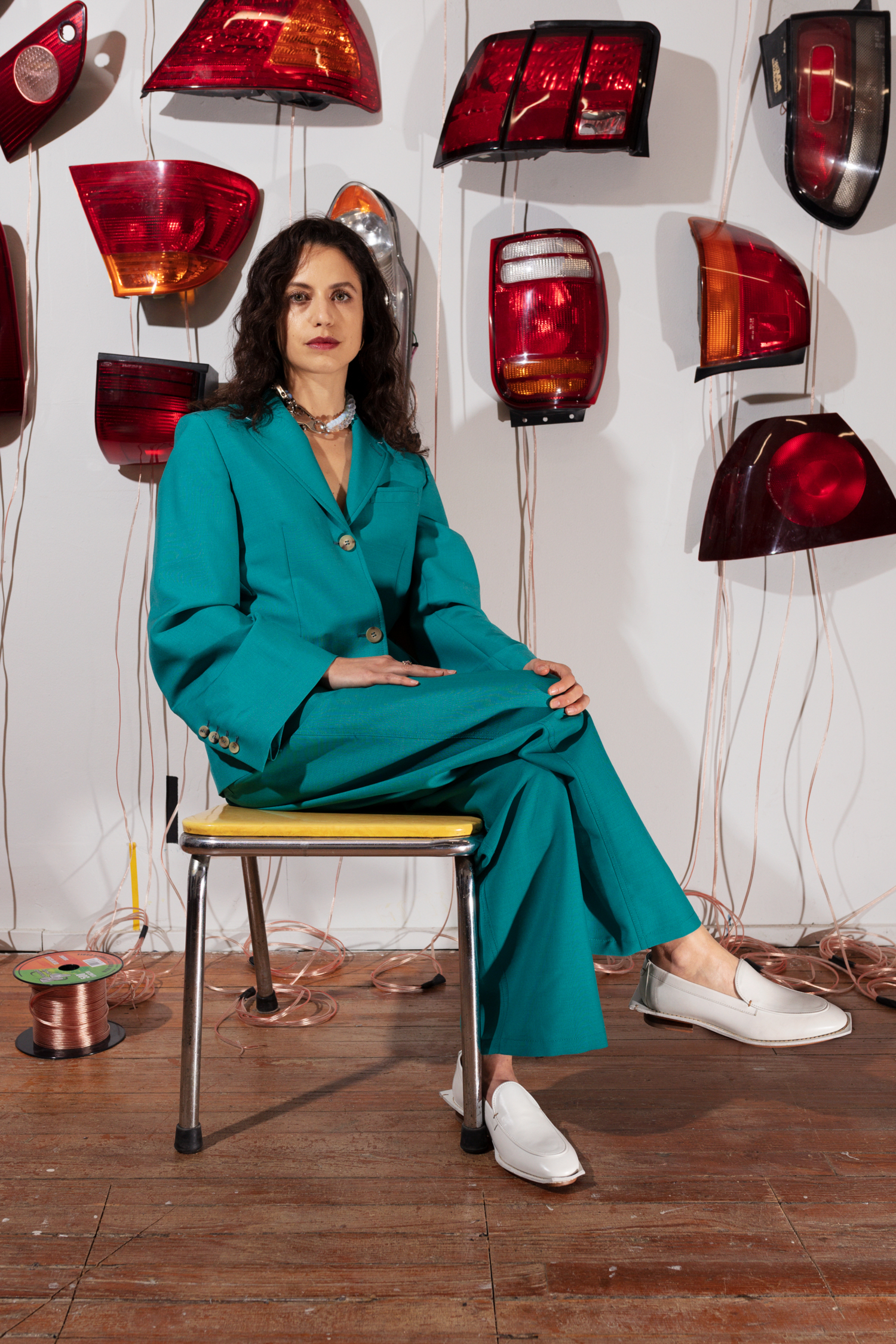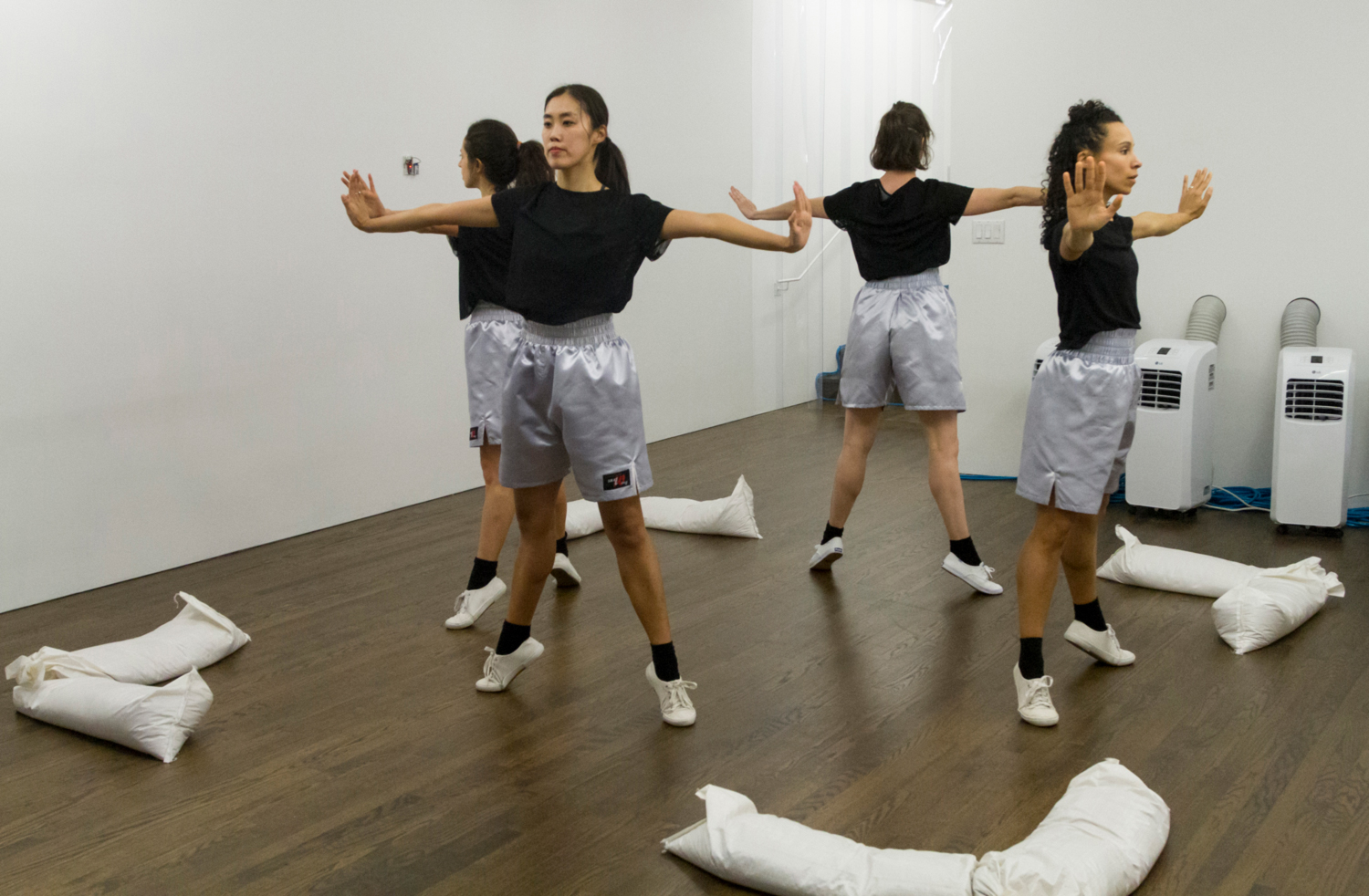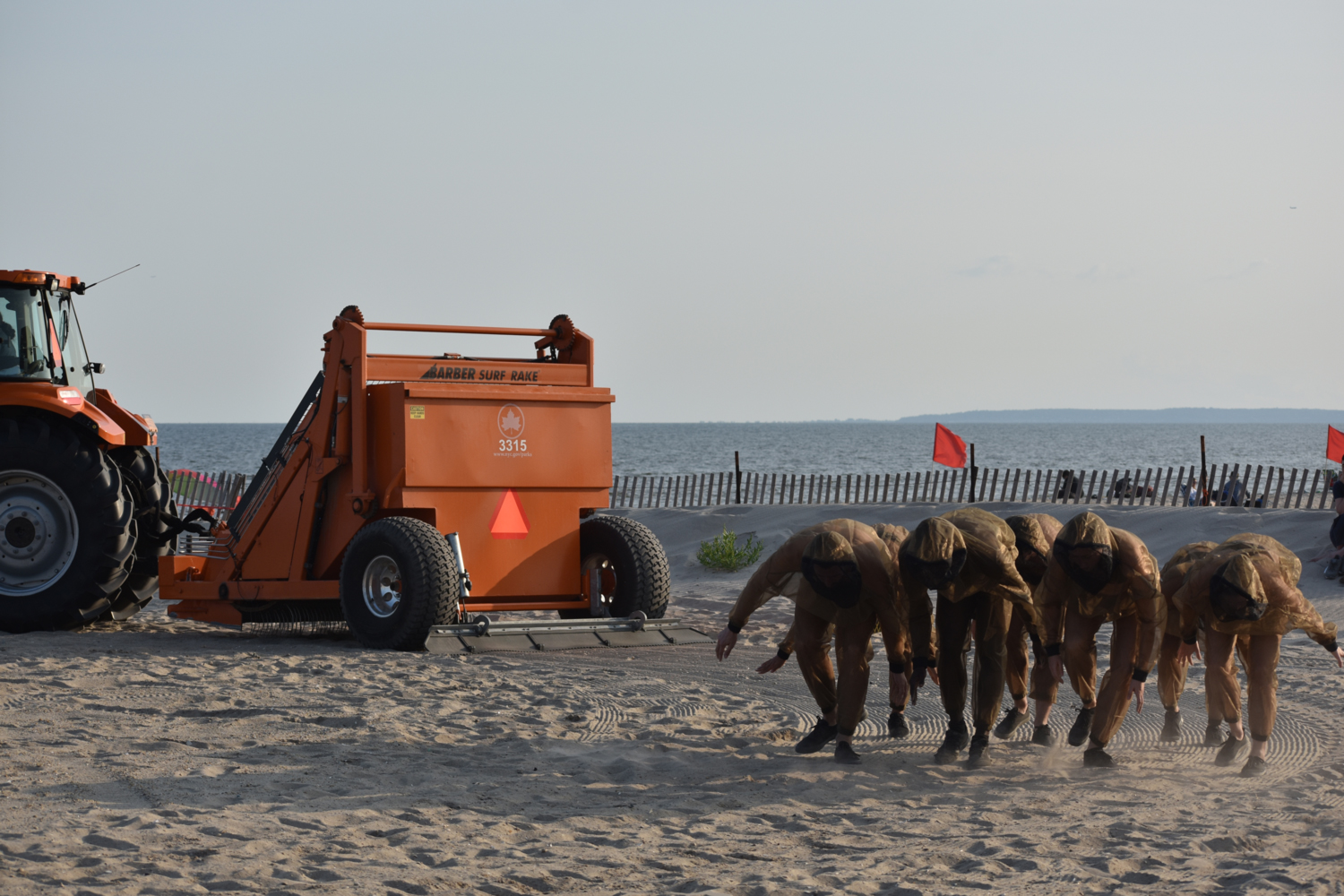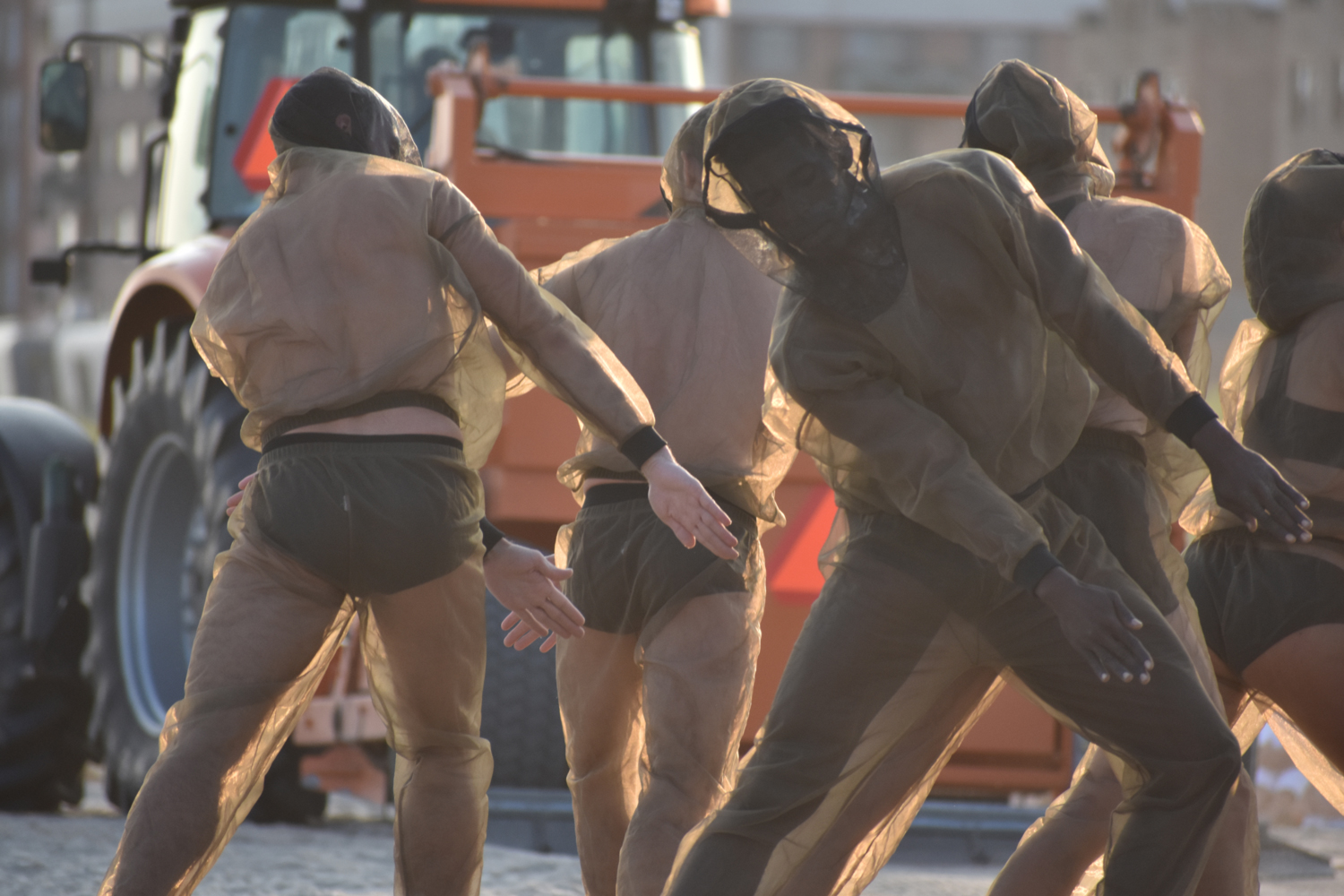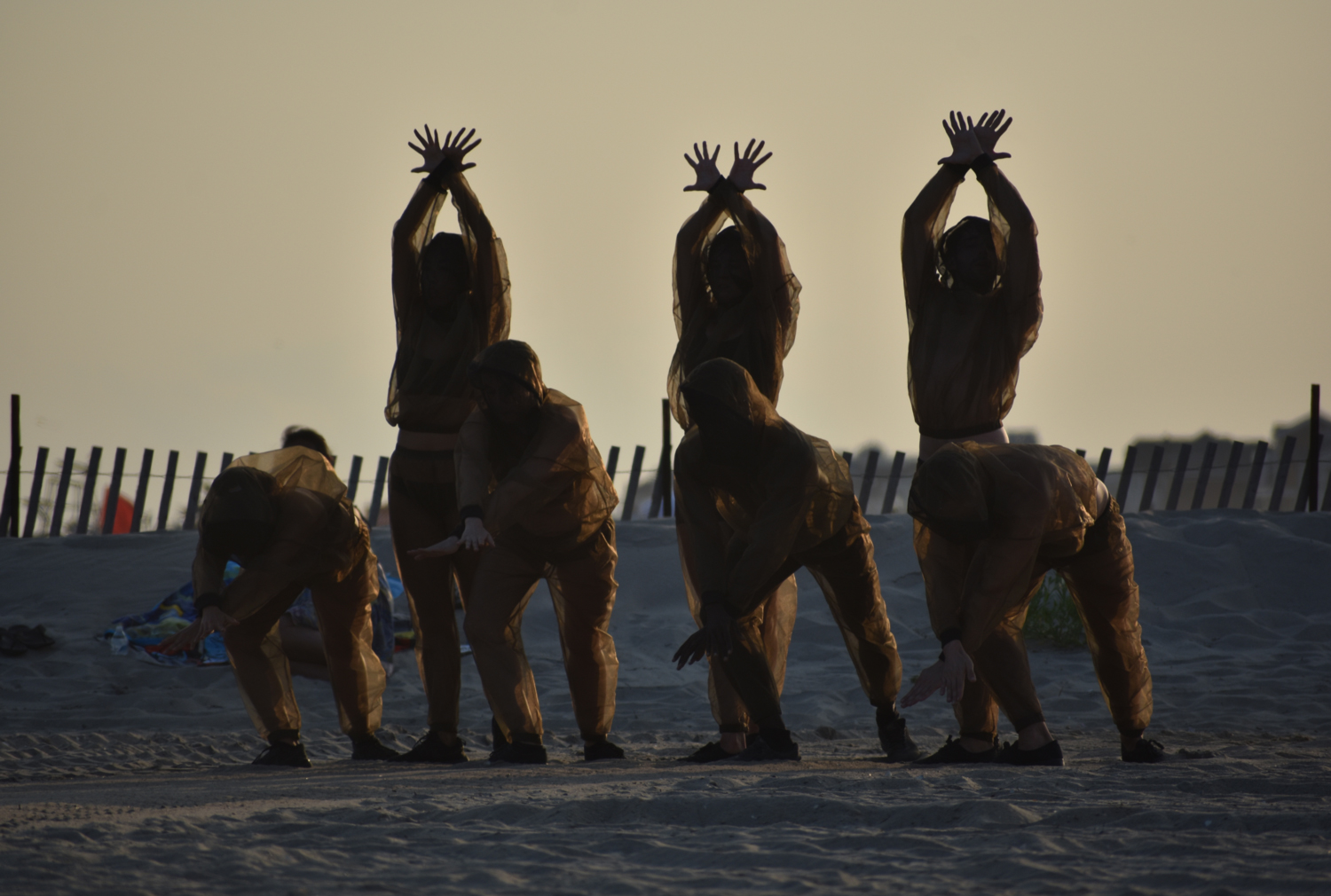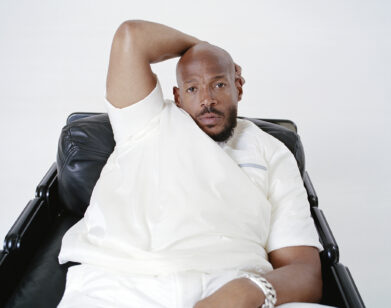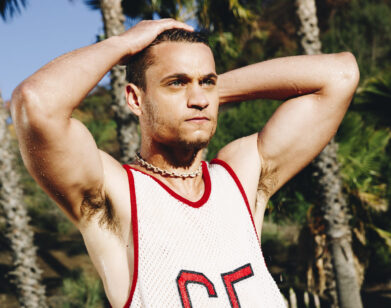dance
The Controlled Chaos of Madeline Hollander
Madeline Hollander is several weeks into her quarantine when she calls from her home in Los Angeles. “Everyone’s daily routines and choreographies have been suspended for months,” she tells me. Her days have been slow and shapeless, the very opposite of a dancer’s planned steps. And now with the protests and curfews sweeping the city—along with the rest of the nation—the question on many minds is, “How do we mobilize effectively while respecting these new rules of conduct?” It’s a tricky question that Hollander’s art productions have been trying to answer for years.
The 34-year-old artist has built a remarkable career on plumbing the patterns and rhythms of the urban landscape, often blending classical dance routines with the unruly disruptions of city life and technology. Earlier this year, at a show in New York, she salvaged hundreds of headlights and taillights from junkyards, mounted them on the gallery walls, and synced them to blink with the actual braking patterns of cars at a nearby intersection. “So much of what is now eerie in the last piece,” she says, “was really just about the choreography of slowing and stopping.”
Hollander, who was classically trained by the Balanchine muse Yvonne Mounsey, hadn’t set out to leave her first passion of ballet to pursue art. But in 2012, she was dancing in an international tour of Swan Lake when she broke her foot during a performance. She decided to head to New York for school and use her dance background to create an entirely new interdisciplinary practice. One early project involved dancers walking on top of rotating cement mixers. Another featured them making fresh tracks in the sand as they danced behind a Zamboni on New York’s Rockaway Beach. (Hollander is also skilled at turning inanimate objects into de facto dancers. For Urs Fischer’s wildly popular 2018 show Play, she choreographed the office chairs that spun around the empty white gallery space.) With all of this experimental, out-of-the-box thinking, it’s no surprise that Hollywood eventually came knocking. Hollander has worked as a choreographer and “movement consultant” for several big-budget films, including orchestrating the trippy, scissor-fighting pas de deux at the end of Jordan Peele’s 2019 film, Us. She has also teamed up with Christopher Nolan for his action-thriller Tenet and again with Peele on Nia DaCosta’s upcoming Candyman sequel.
When the art world fully opens up again, Hollander will be busy. She’s slated to present a selection of lockdown-friendly digital performances for New York’s The Shed, scheduled for winter 2021. In the spring, she will stage an immersive solo exhibition featuring research, drawings, and film at the Whitney Museum of American Art. She created an infrared video for the show that tracks the rapid emergence of silent crickets over their chirping rivals on the Hawaiian island of Kauai. It seems as if the world is finally catching on to the dangers, beauties, and paradoxes of the social interactions that Hollander so eloquently explores. Take, for instance, her 2018 work “New Max,” which involved a network of dancers, sensor thermometers, air-conditioning units, and high-voltage lighting. Once the dancers’ bodies heated up the room to a set temperature, the air-conditioners turned on to cool it down, the lights went off, and the dancers rested, only to repeat the cycle again and again. “It seems pretty clear that humans have been heating up the world to try and keep up with our pace of greed and capitalism,” she says. “This shutdown period feels like we have hit that max where we are being forced to ‘freeze’—to let things cool down, even temporarily, before we start up again.” But Hollander doesn’t see stasis as the answer. “It’s time to harness all this energy with intention, to re-choreograph how we allocate funding, and to communicate about race.”
———
Hair: Kazuto Shimoura using Bumble and Bumble.
Makeup: Yui Ishibashi using Mac Cosmetics.
Photography assistant:Chris Smith
Fashion assistant: Nick Gonzales

